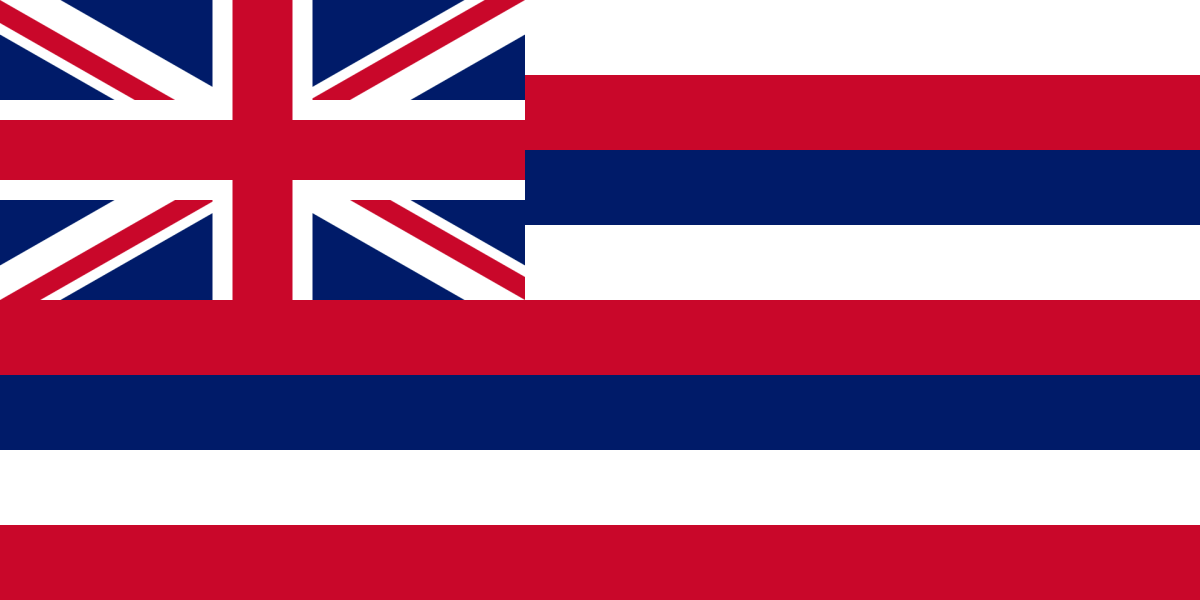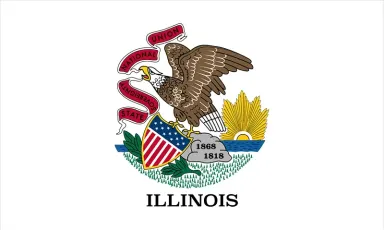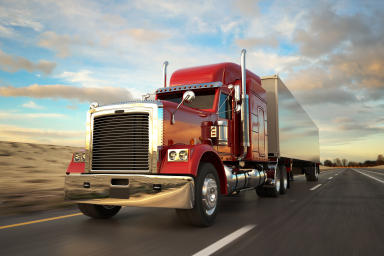Hawaii Trucking Laws

Truck accidents are a serious problem on Hawaii's roads, as they can result in significant damage, injuries, and even fatalities. According to the FMCSA Motor Carrier Management Information System data, 165 accidents involving large trucks and buses occurred in Hawaii from January to November 2022, causing 96 injuries and four fatalities.
Some of the most dangerous roads in Hawaii are the Kahekili and Hana Highways in Maui, with narrow lanes, sharp turns, and steep drop-offs, which can be particularly challenging for truck drivers. Similarly, the Pali Highway on Oahu has sharp turns and steep inclines that can be hazardous for larger vehicles.
Determining who is at fault can be complex in a truck accident, as multiple parties may be involved. Since truck drivers carry massive, riskier vehicles, they are subject to strict laws in Hawaii, like license restrictions, DUI laws, and distracted driving regulations. It is important to learn about these laws in case of accidents and unforeseen circumstances.
Hawaii Commercial Driver’s License
Commercial Driver's Licenses (CDLs) are required for anyone who wants to operate a commercial vehicle in Hawaii. CDLs are regulated by the Federal Motor Carrier Safety Administration (FMCSA) and the Hawaii Department of Transportation (HDOT). They are issued to drivers who meet certain qualifications and pass a series of tests.
A CDL is required for those operating a vehicle that weighs over 26,001 pounds, carries more than 16 passengers, or transports hazardous materials. To obtain a CDL in Hawaii, drivers must be at least 21 years old and pass a series of tests that measure their knowledge and driving skills.
There are three classes of CDLs in Hawaii:
Class A CDLs are required for drivers who want to operate combination vehicles weighing 26,001 pounds or more.
Class B CDLs are required for drivers who want to operate single vehicles with a weight of 26,001 pounds or more or vehicles that carry more than 16 passengers.
Class C CDLs are required for drivers who want to operate vehicles that transport hazardous materials.
Drivers must have a clean driving record and meet certain health and safety requirements. Once they have obtained their CDL, they must meet certain requisites, including regular medical exams and ongoing training.
Hawaii Medical Requirements for CDL Holders
Hawaii has specific medical requirements drivers with CDL must meet to maintain their licenses and legally operate commercial vehicles on Hawaii roads.
CDL holders must undergo a medical examination by a certified medical examiner at least once every two years to maintain their license. It is also conducted when the driver applies for a higher CDL class or transfers a CDL from another state. This examination evaluates the driver's physical health and ability to operate a commercial vehicle safely. It includes a variety of tests and assessments, including vision and hearing tests, blood pressure and pulse measurements, and evaluations of the driver's overall physical health and fitness. The examiner will also review the driver's medical history and any medications they may be taking to assess their ability to perform the physical tasks required to operate a commercial vehicle safely.
In addition to the regular medical examination, CDL holders must notify the Motor Vehicle Safety Office of any changes in their medical status that could affect their ability to operate a commercial vehicle safely. This can be done through a self-certification form submitted with the Medical Examiner’s Certificate via driverrecords.hwyv@hawaii.gov.
Hawaii Trucking Size and Weight Regulations
Hawaii has set maximum weight, height, and width limits for commercial vehicles and established specific weight limits for different types of vehicles, aiming to ensure the safety of drivers and passengers on roads and highways.
The maximum weight for commercial vehicles in Hawaii is 80,000 pounds. This includes the weight of the vehicle and any cargo it is carrying. The maximum height requirement is 14 feet, and the maximum width is nine feet. Additionally, the maximum length for single motor vehicles is 45 feet, while truck tractors and semi-trailers must span 65 feet in length.
There are also established penalties for commercial vehicle size and weight violations, ranging from $25 to $1,800. The fine for exceeding weight limits is based on the vehicle's excess weight. For example, a vehicle shall be fined $250 for being 10 to 1,500 overweight and $1,160 for being over 10,001 pounds overweight. In addition, the fines for excess dimensions also depend on how many feet the vehicle exceeds. For example, a five-foot violation is fined $50, while an over 15 feet violation costs $200.
Hawaii Oversize and Overweight Vehicle Rules
Hawaii has oversize and overweight vehicle rules that regulate the operation of commercial trucks that exceed the state's size and weight limits.
The oversized and overweight vehicle rules apply to any vehicle or combination of vehicles exceeding the size and weight limits listed above. Vehicles exceeding these limits must obtain a special oversize and overweight vehicle permit from HDOT before operating on Hawaii's roads. The oversized and overweight vehicle permit application process involves submitting detailed information about the vehicle, its load, and the proposed travel route.
Hawaii Trucking Hours of Service Regulations
The Hawaii Trucking Hours of Service Regulations govern the amount of time commercial truck drivers can spend on duty and driving in a given period. It follows the federal law on maximum driving time for commercial vehicles. These regulations are designed to ensure that commercial drivers are well-rested and can safely operate their vehicles.
Commercial truck drivers are limited to a certain number of hours of driving and on-duty time per day and per week. For example, drivers of property-carrying vehicles are generally limited to 11 hours of driving time and 14 hours of on-duty time per day, while drivers of passenger-carrying vehicles are limited to 10 hours of driving time and 15 hours of on-duty time per day.
The regulations also require commercial truck drivers to take regular breaks and rest periods, such as a 30-minute break after 8 hours of driving.
Hawaii Trucking DUI Law
Hawaii's DUI law makes it illegal for commercial truck drivers to operate a commercial motor vehicle while under the influence of alcohol or drugs. The law protects public safety and prevents accidents caused by impaired truck drivers.
The law prohibits commercial truck drivers from driving with a blood alcohol concentration (BAC) of 0.04% or higher, which is lower than the 0.08% limit for non-commercial drivers. Additionally, the law prohibits using any controlled substance while operating a commercial motor vehicle.
Commercial driving while under the influence of drugs or alcohol is considered a major offense, which can lead to a one-year disqualification for a first offense and a lifetime disqualification for subsequent offenses. It is also important to note that drivers of vehicles transporting hazardous materials may face a three-year disqualification for a first commercial DUI offense.
Hawaii Trucking Speeding Law
The Hawaii Speeding Law establishes speed limits for commercial vehicles, and drivers who exceed these maximum speeds can be subject to fines and other penalties.
Commercial vehicles are generally prohibited from traveling at speeds greater than 55 miles per hour on highways and 45 miles per hour on other roads. However, there are some exceptions to these limits. For example, commercial vehicles that are transporting hazardous materials may be subject to lower speed limits, and drivers may be required to slow down in risky weather conditions or when driving on certain types of roads.
The speeding law is considered a serious traffic violation and can lead to a 60-day disqualification if the driver has been convicted twice during a three-year period. Furthermore, drivers convicted three times within three years may face 120 days of disqualification.
Hawaii Trucking Distracted Driving Law
The Hawaii Distracted Driving Law prohibits commercial drivers from engaging in mobile communication activities that could distract them from safely operating their vehicles.
Commercial drivers are not allowed to use a handheld mobile phone while driving, including holding a mobile phone to make or receive calls, sending or receiving texts, or using any other function on the phone while driving. Hands-free devices are allowed, but drivers are reminded to keep their attention focused on the road.
Additionally, the law prohibits using any electronic device that requires more than a single touch or swipe to activate. This includes tablets and laptops not specifically designed for driving.
Commercial drivers found to be violating this law may face fines of up to $2,750 and 60 to 120 days of disqualification for subsequent offenses.
Hawaii Commercial Trucking Insurance Requirements
Commercial trucking insurance established by the FMCSA is required in Hawaii to protect the safety of other drivers on the road and to ensure that damages resulting from accidents can be adequately compensated. Commercial trucking insurance requirements differ depending on the weight and vehicle type.
Generally, commercial vehicles carrying general freight must have a minimum of $750,000 liability coverage, while those carrying oil and certain types of hazardous wastes are required to have at least $1,000,000. On the other hand, commercial vehicles carrying hazardous substances must have a minimum of $5,000,000 of liability coverage. In addition to liability insurance, commercial motor vehicle operators may carry cargo or physical damage insurance.
Commercial motor vehicle operators need to ensure they have the appropriate insurance coverage in place at all times to avoid potential legal and financial consequences.
How Much Can Someone Sue for a Truck Accident in Hawaii?
The compensation for truck accidents in Hawaii may vary depending on the severity of the injuries, the level of negligence on the part of the at-fault driver, and the amount of property damage.
There is no established cap on economic damages, which means the injured victim can receive compensation for medical bills, lost wages, and future medical costs. However, there is a cap of $375,000 for non-economic damages, which include emotional anguish, pain and suffering, and loss of enjoyment of life. There are exceptions to this cap for certain types of cases, such as wrongful death.
Hawaii Statute of Limitations for Truck Accidents
The Hawaii statute of limitations for truck accidents is two years from the date of the accident. If the lawsuit is not filed within two years, the individual may lose their right to file a lawsuit and seek compensation for their injuries.
However, there are instances where the statute of limitations may be extended or paused, such as if the injured party is a minor or if the responsible party fled the state.
An attorney can help injured victims understand their legal rights and determine the best course of action. Waiting too long to file a lawsuit can significantly impact a person’s ability to recover compensation for injuries and losses.
Hawaii Is a No-Fault State for Insurance Claims
Hawaii is a no-fault state for insurance claims, meaning individuals involved in an accident can seek compensation from their insurance company regardless of who was at fault. This differs from fault-based insurance systems, where individuals must seek compensation from the insurance company of the party at fault.
Under the no-fault system, drivers must carry personal injury protection (PIP) insurance, which covers medical expenses, lost wages, and other related costs resulting from an accident, regardless of fault.
On the other hand, if the total amount of medical expenses and other losses exceeds the limits of PIP coverage, an individual may be able to pursue additional compensation from the at-fault driver or their insurance company.
Hawaii Is a Modified Comparative Negligence State for Trucking Accident Lawsuits
Hawaii is a modified comparative negligence state for trucking accident lawsuits. This means if an individual is injured in a trucking accident and is found to be partially responsible, their compensation may be reduced proportionately to their level of fault. However, if the individual is found to be more than 50% at fault for the accident, they may not be eligible for compensation.
A jury or judge determines the percentage of fault and the subsequent indemnity based on the evidence presented in the case. For example, if an individual is found to be 30% at fault for a trucking accident and their damages are $100,000, their compensation may be reduced by 30% to $70,000.
It's important to note that Hawaii follows the doctrine of joint and several liability, which stipulates that each party contributing to the cause of an accident may be liable for the total damages. This means if multiple parties are at fault in a trucking accident, any of them may be asked to pay the full amount of damages, even if their level of culpability is relatively small.
Average Settlement for Hawaii Trucking Accident Lawsuits
Determining the average settlement for trucking accident lawsuits can be challenging. The amount of compensation awarded in these cases can vary widely depending on the specific circumstances of the accident and the extent of the injuries and damages suffered by the victim.
In general, however, settlements may range from a few thousand dollars to several hundred thousand dollars or more, depending on factors such as medical expenses, lost wages, property damage, pain and suffering, and the accident's impact on the victim's life and livelihood. In some cases, punitive damages may also be awarded if the truck driver or company acted recklessly or intentionally to cause the accident.
Getting legal representation from an experienced personal injury attorney is crucial to fighting for the compensation the plaintiff deserves. Many personal injury attorneys offer free initial consultations and take their payment from the settlement awarded on a contingency fee basis. Contingency fees for trucking accident lawsuits typically range from 33% to 40% of the total settlement or judgment. However, this depends on the specific circumstances of the case and the agreement between the lawyer and the client.
Legal Resources for Hawaii Trucking Accident Victims
Hawaii State Bar Association Lawyer Referral & Information Service
The Hawaii State Bar Association's LRIS connects truck accident victims and their families with experienced attorneys who can help them understand their legal options and build a strong case. Its attorneys are dedicated to providing effective legal representation. They can be reached at (808) 537 9140 and LRIS@HSBA.org.
Legal Aid Society of Hawaii
The Legal Aid Society of Hawaii is a non-profit organization dedicated to providing legal assistance and representation to low-income individuals and families across the state. It aims to deliver equal access to justice through a range of legal services and resources to help those in need navigate the legal system. It also offers access to resources like legal guides, forms, and self-help materials. The organization can be contacted at (808) 536-4302 in Oahu and 1800-499-4302 in the neighboring islands.
Hawaii Police Reports Portal
The Hawaii Police Department provides online services for accessing and obtaining copies of police reports. Individuals can request and purchase reports on truck accidents and other motor vehicle incidents. This can be a valuable resource for individuals seeking to gather evidence and documentation related to a legal issue.
Hawaii Motor Vehicle Accident Report Form
The State of Hawaii Motor Vehicle Accident Report Form is provided by the National Highway Traffic Safety Administration (NHTSA) for people involved in a trucking accident or those who have witnessed such incidents. It documents driver behavior, vehicle factors, and roadway conditions during the crash.
Hawaii 511 GoAkamai Traffic Information
GoAkamai provides real-time traffic information and alerts for Hawaii roads. It offers valuable resources to help truck drivers navigate Hawaii's roads and highways safely and efficiently. Users can access live traffic cameras, maps, and alerts for accidents, construction, and other events impacting traffic flow. It can also help drivers plan their transport routes, avoid traffic delays, and make the most of their time on the road.
Hawaii Commercial Driver’s License Manual
The Hawaii Commercial Driver’s License Manual is an essential resource for truck drivers in the state. It provides detailed information on the knowledge and skills required to operate commercial vehicles safely and effectively, including information on vehicle inspection, safe driving practices, and regulatory compliance. It helps commercial drivers understand their responsibilities and use their vehicles in a safe and professional manner.
Expertise.com StaffAuthor
Step into the world of Expertise.com, your go-to hub for credible insights. We don't take accuracy lightly around here. Our squad of expert reviewers, each a maestro in their field, has given the green light to every single article you'll find. From rigorous fact-checking to meticulous evaluations of service providers, we've got it all covered. So feel free to dive in and explore. The information you'll uncover has been stamped with the seal of approval by our top-notch experts.




